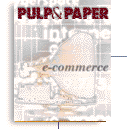|

CHRISTER IDHAMMAR
is president and CEO of IDCON Inc., Raleigh, N.C., a company specializing in training and implementation of improved operations, maintenance organizations,and practices.
I am interested in receiving feedback and results from you concerning this column. Please feel free to contact me by phone at:(919) 847-8764 fax: (919) 847-8647 e-mail: c_idhammar@idcon.com
Paper Industry Maintenance ’99 Conference & Exhibition, Oct. 11-15, Atlanta, Ga. PIM ’99 is an excellent opportunity to improve maintenance operations. You’ll learn valuable tips and practical pointers on cost-effective failure analysis, team building, and more. Call or fax for information and an updated program. phone: (817) 255-8021 fax: (817) 255-8070
|

CMMS and preventive maintenance
A very important part of a cost-effective preventive maintenance program is what I call the route-based activity. These are activities that are easiest to do, and to administer, if they are presented in a list. This list can be presented in electronic format or in a paper format and includes such activities as lubrication and inspections by maintenance craftspeople and equipment operators. There are two major things that surprise me regarding these basic preventive maintenance activities:
1. With the very good return on investment (ROI) you get from these programs, I am surprised at how many mills lack these programs or perform them very poorly.
2. All major computerized maintenance management systems (CMMS) lack the capability to administer these routes in an efficient manner.
RETURN ON INVESTMENT. We use cost avoidance analysis as a tool to measure the return on investment (ROI) from route-based activity programs (exclusive of lubrication). In the last year we have verified the ROI to be between five to 10 times the initial investment and, after that, 10 to 30 times the cost to run the program. Even if such a good ROI can be verified, the inspection program is very poor in most mills and, if one exists, it is not executed with the highest priority.
CMMS SHORTCOMINGS. All CMMS providers we talk with say their systems can produce inspection lists to support inspection and lubrication routes. We must understand that, in the computer world, the answer is always, "Yes, our system can do that.” It is never “no.”
The dilemma is that the CMMS provider does not think in terms of route-based activities at all. Their systems are driven by work orders. If each inspection is given a work order number, you can do the inspections in a route documented with more than 250 work orders. First of all, this is impractical for the person doing the inspections, and, secondly, it will require a lot of time for someone to close all the work orders.
Another way route-based activities are performed in a work order driven CMMS is to give each route a work order number and describe each inspection in a sub work order. This still creates complications and administrative time. A third example of how some mills try to document and administer route-based activities is to give each route a work order number and have the route documented in a spread sheet. Again, the dilemma is that this method will not support effective routes and will make it more cumbersome than necessary to change the content of inspections, transfer tasks to operators, change frequencies, merge mechanical and electrical inspections, and so forth. All of these activities are frequently done if you have a good system implemented.
To date, we have only found small CMMS packages that have good inspection programs. The solution is, therefore, to have a standalone system for route-based activities. Even in a time when it seems like all activities must be integrated into one company-wide system that covers everything, the best solutions can still be standalone systems. There are very few things—if any at all—in a route-based system that need to be tied with other activities. Therefore, you can very well buy a standalone system for this activity. A single-user system that can do this well is not expensive. The minimum requirements for a good route-based system must allow you to:
• See all programmed preventive maintenance activities per equipment identification in one document.
• Change an activity from one craft to another in seconds. (For example, moving a mechanical inspection to an operator inspection).
• Change a frequency in seconds.
• Change a standard activity in minutes. (For example changing the standard inspection of gears to a new inspection method, or changing three types of lubricants to a single new type.)
• Add or delete equipment in minutes.
GOOD INSPECTION PROGRAMS. If you do have a good inspection program implemented, you should recognize the following indicators:
• All hours for lubrication, mechanical, and electrical and instrumentation preventive maintenance activities are 6% to 12% of total maintenance hours.
• Most work in shut down and weekly and daily schedules is the result of early problem detection from preventive maintenance inspections.
• There are no unnecessary duplications of preventive maintenance activities between mechanical, electrical, lubrication, operators, and so forth.
• The content of the preventive maintenance program is right and you actually perform 100% of programmed preventive maintenance activities.
• Average vibration level continuously decreases.

|





